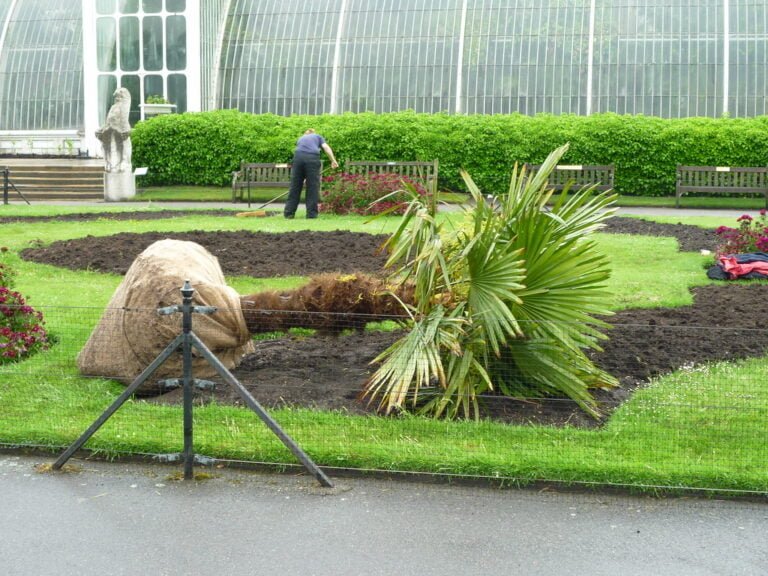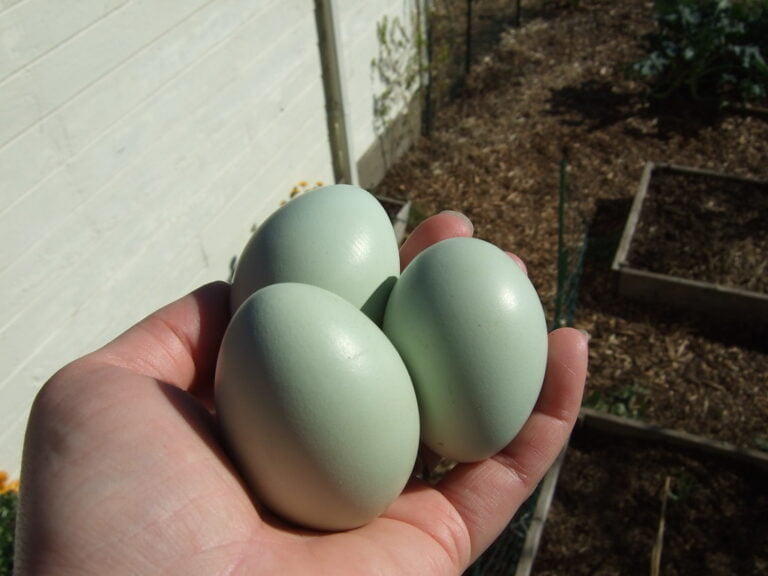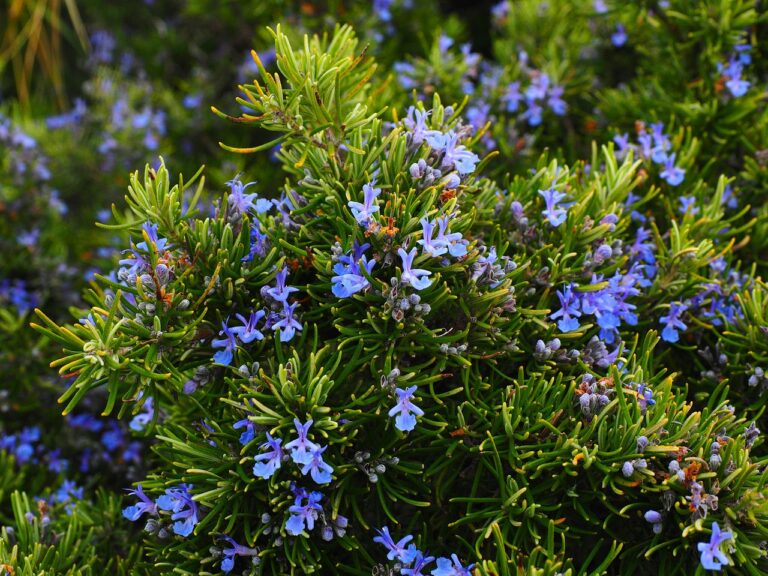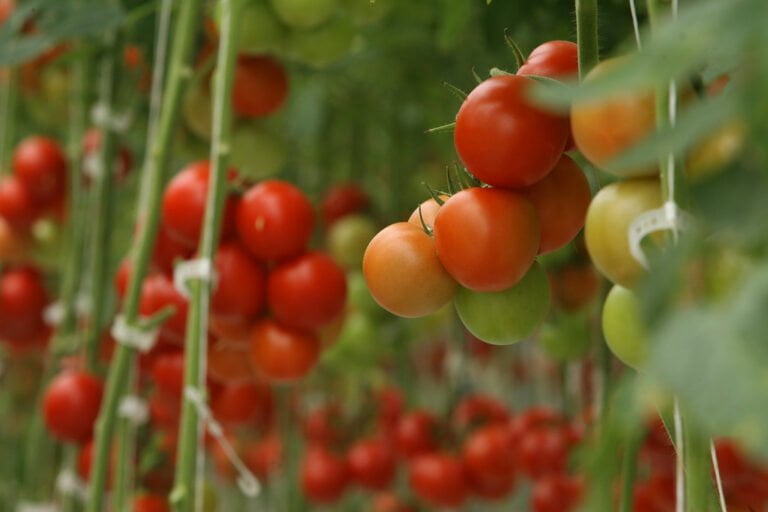Understanding the Benefits and Techniques of Mulching: A Comprehensive Guide on Types and Uses
Mulching is essential for plant health, soil enrichment, and maintenance reduction. It aids in moisture retention, weed suppression, temperature regulation, and nutrient provision. Organic mulches offer aesthetics, weed control, cost-effectiveness, nutrient release, and soil improvement. Types include wood chips, bark, leaves, and grass clippings. Inorganic mulches provide visual appeal, weed control, durability, and low upkeep. Varieties comprise stone, rubber, and landscape fabric. Proper techniques involve layer thickness maintenance, pest prevention, air circulation, and organic mulch turning. Consider mulch choice based on plant needs and landscape aesthetics. Harness mulching benefits for optimized plant well-being and soil vitality.
Benefits of Mulching
Why is mulching essential for maintaining healthy soil and promoting plant growth? Mulching plays a pivotal role in enhancing soil quality and supporting plant health through various mechanisms. One key benefit of mulching is moisture retention. By creating a protective barrier over the soil, mulch helps reduce water evaporation, thereby conserving moisture and decreasing the frequency of watering needed for plants to thrive. Additionally, mulch serves as a natural weed suppressor by blocking sunlight from reaching weed seeds, thereby inhibiting their germination and growth. This weed control aspect not only maintains the aesthetic appeal of the garden but also prevents competition for nutrients between weeds and desired plants.
Moreover, organic mulches contribute to soil enrichment as they decompose over time. As the mulch breaks down, it releases essential nutrients back into the soil, improving its overall quality and fertility. Another significant advantage of mulching is temperature regulation. During hot weather, mulch acts as an insulating layer, keeping the soil cooler and providing a more stable environment for plant roots. This controlled soil temperature fosters ideal conditions for root development and overall plant growth. To conclude, mulching is a valuable practice that promotes water conservation, weed control, soil enrichment, and temperature regulation, all of which are vital for maintaining healthy soil and supporting robust plant growth.
Organic Mulches Overview
Organic mulches, such as wood chips and bark, play a vital role in enhancing the aesthetics of landscapes while effectively suppressing weed growth. Materials like straw, leaves, and grass clippings provide cost-effective options ideal for nurturing vegetable gardens and flower beds. As these organic mulches decompose, they gradually release essential nutrients into the soil, fostering a thriving environment for beneficial microorganisms and improving soil structure for best plant growth.
Types of Organic Mulches
Exploring the various types of organic mulches offers gardeners a wide range of options to improve plant health and soil quality. When considering organic mulches for your garden, you can choose from a variety of materials, each with its unique benefits. Here are some common types of organic mulches:
- Wood Chips: Effective for weed control and moisture retention, wood chips decompose slowly, enriching the soil with nutrients over time.
- Bark: Bark mulch not only suppresses weeds but also adds a decorative touch to your landscape while improving soil structure.
- Leaves and Grass Clippings: These readily available mulches boost soil fertility, boost plant growth, and help maintain adequate soil moisture levels.
Benefits of Organic Mulches
After investigating the various assortment of organic mulches available for gardeners, it becomes apparent that these natural materials offer numerous benefits for improving plant health and soil quality. Organic mulches, such as wood chips and bark, not only provide important weed control and improve landscape appearance but also gradually release nutrients into the soil, promoting the activity of beneficial microorganisms. Options like leaves and grass clippings are affordable choices, particularly suitable for flower beds and vegetable gardens. These mulches play a vital role in improving soil structure, aiding in moisture retention, and ultimately benefiting plant growth. By maintaining a 2-4 inch layer of organic mulch, gardeners can effectively suppress weeds and enrich the soil, leading to healthier and more vibrant plants.
Inorganic Mulches Explained
Inorganic mulches, such as stone, rubber, and landscape fabrics, offer distinct advantages in landscaping. Stone and pebble mulch contribute to the visual appeal and heat retention of an area, while rubber mulch provides eco-friendly weed control and insulation. Landscape fabrics act as effective barriers against weeds, promoting water and air circulation while inhibiting unwanted plant growth.
Benefits of Inorganic Mulches
Utilizing inorganic mulches in landscaping provides long-lasting weed control and improves the visual appeal of outdoor spaces. Inorganic mulches, such as rubber mulch and stone, offer various benefits that make them a popular choice for elevating landscapes. Here are the key advantages of using inorganic mulches:
- Weed Control: Inorganic mulches excel at suppressing weeds, reducing the need for constant maintenance.
- Aesthetic Appeal: These mulches enhance the visual appeal of gardens and pathways, providing a clean and polished look.
- Durability and Low-Maintenance: With their long-lasting properties, inorganic mulches like rubber mulch and landscape fabrics offer a low-maintenance solution for landscaping projects.
Types of Inorganic Mulches
Stone and pebble mulch, known for their aesthetic appeal and heat retention properties, stand out as popular choices in landscaping designs. Rubber mulch, an eco-friendly option, offers excellent weed control and insulation benefits. Landscape fabric serves as a durable barrier preventing weed growth while allowing water and air circulation. Inorganic mulches like stone and rubber excel in weed control and durability compared to organic mulches. However, it’s essential to note that inorganic mulches do not provide soil-enhancing properties like their organic counterparts. Understanding the unique characteristics of inorganic mulches such as rubber mulch, landscape fabric, stone mulch, and pebble mulch can help you make informed decisions when selecting the most suitable mulch for your landscaping needs.
Application Tips for Inorganic Mulches
For exceptional effectiveness when applying inorganic mulches in landscaping, consider using a weed barrier fabric to enhance weed control and guarantee long-lasting durability. When applying inorganic mulches, here are some application tips to keep in mind:
- Enhance Weed Control: Utilize landscape fabrics or weed barrier fabrics to prevent weed growth effectively.
- Ensure Water and Air Penetration: Make sure to choose mulches that allow for proper water and air penetration to maintain soil health.
- Maximize Durability: Opt for inorganic mulches known for their durability to ensure long-lasting weed control effectiveness and reduce the need for frequent reapplications.
Proper Mulching Techniques
To effectively maintain your garden’s health and appearance, it is vital to adhere to proper mulching techniques. Maintaining a mulch layer thickness of 2-4 inches is key for effective weed suppression and moisture retention. This layer acts as a barrier, reducing weed growth by blocking sunlight and hindering weed germination. Additionally, it helps to conserve soil moisture by reducing evaporation, thereby promoting plant health and reducing the need for frequent watering.
When mulching around plants, it is crucial to leave a mulch-free space around their bases to prevent rot and pest infestations. This practice allows for proper air circulation and reduces the risk of moisture-related diseases. Regularly turning organic mulch is also recommended to promote aeration and replace decomposed mulch, which contributes to soil enrichment.
For improved weed control and durability, consider using weed barrier fabric with inorganic mulches. This fabric acts as an additional weed suppression layer while still allowing water penetration. Improper mulching thickness can lead to suffocation of plant roots or hinder water penetration, negatively impacting plant growth. By following these essential mulching techniques, you can maintain a healthy and vibrant garden ecosystem.
Choosing the Right Mulch
When choosing the appropriate mulch for your garden, it is crucial to consider the specific moisture retention needs of your plants. Different types of mulches serve various purposes based on the requirements of the plants they are used for. Here are three key considerations for selecting the right mulch:
- Organic Mulches: Organic mulches like wood chips are fantastic for improving moisture retention in the soil. They gradually break down, enriching the soil with nutrients and improving its structure. Acid-loving plants, such as azaleas and blueberries, benefit from organic mulches that help maintain low pH levels in the soil.
- Inorganic Mulches: Inorganic mulches like stones or pebbles are ideal for plants that need good drainage, such as succulents and cacti. These mulches do not decompose and can provide a long-lasting solution to maintain soil moisture levels while preventing waterlogging.
- Aesthetics and Functionality: Take into account the overall look of your garden when choosing mulch. Select mulches that not only serve practical purposes like erosion prevention and weed control but also enhance the visual appeal of your garden. Matching the mulch to the aesthetics of your garden can create a cohesive and visually pleasing landscape.
Mulching for Weed Control
Mulching effectively controls weed growth by creating a physical barrier that inhibits weed establishment through blocking sunlight and hindering germination. Organic mulches, such as wood chips and straw, are excellent choices for weed control. These materials not only provide a barrier that smothers weeds but also reduce access to light, essential for weed growth. To achieve best weed control, it is recommended to apply a proper mulch thickness of 2-4 inches. This thickness effectively suppresses weeds by depriving them of the light needed for photosynthesis, ultimately hindering their growth.
Inorganic mulches, like landscape fabric, offer another effective weed barrier option. The fabric acts as a physical barrier that inhibits weed growth by blocking sunlight and preventing weed seeds from reaching the soil. Choosing environmentally friendly mulching options like organic mulches or landscape fabric not only aids in weed control but also reduces the need for herbicides. By implementing these mulching techniques, you can create a healthier, more sustainable landscape while effectively managing weed growth. Remember, the key to successful weed control through mulching lies in selecting the right type of mulch and ensuring proper application for maximum effectiveness.
Maximizing Plant Health Through Mulching
Maximizing plant health through mulching involves retaining moisture in the soil, reducing water evaporation, and promoting ideal growing conditions. Organic mulches like shredded leaves and grass clippings gradually release nutrients into the soil, enhancing plant nutrition and growth. Proper mulching techniques create a barrier against weeds, preventing competition for essential nutrients and resources. Additionally, mulching aids in regulating soil temperature, protecting plant roots from extreme heat or cold stress. By improving soil structure and promoting beneficial microorganism activity, mulching contributes to overall plant vitality and resilience.
- Retaining Moisture: Mulching helps to keep the soil moist, reducing the frequency of watering needed by plants and ensuring they have a constant water supply for growth.
- Enhancing Plant Nutrition: Organic mulches break down over time, releasing essential nutrients into the soil that plants can absorb, promoting healthy growth and development.
- Regulating Soil Temperature: Mulch acts as insulation, keeping the soil temperature stable, which is essential for root health and overall plant resilience to environmental stressors.






